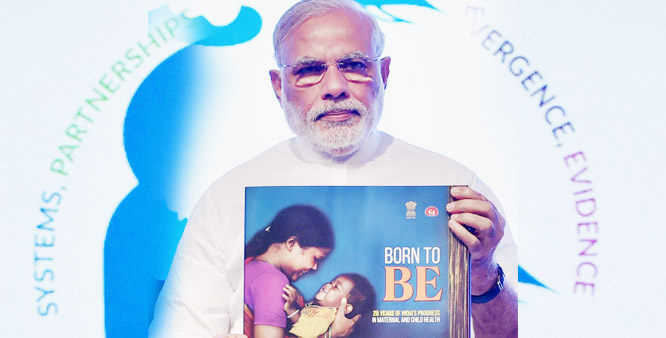India has recorded a 22 percent drop in Maternal Mortality Ratio (MMR), bringing the number of deaths down to 130 from the previous 167. The Maternal Mortality Ratio (MMR), which calculates the death of a mother in per lakh deliveries, is defined as “the death of woman while she is pregnant or within 42 days of pregnancy termination, irrespective of the duration and site of the pregnancy, from any cause related to or aggravated by the pregnancy or its management but not from accidental or incidental causes.”
MMR for the year 2011-13 was 167 which came down at 130 for the period of 2014-16. It is one of the important indicators of health facilities available in the country. The Millennium Development Goals (MDG) recognized MMR as a key indicator of development and public health and set the target of 70. Most of the developing countries could not achieve the target between the periods of 2000-2015 for which MDG was set up.
Commenting on the latest Sample Registration System (SRS) data released on June 7 Dr Ajay Khera, Deputy Commissioner, Child Health, the Health Ministry said “This is a great achievement for us and a major contributing factor is that almost 80% of women are now giving birth in hospitals, both public and private. If you look at decade-old numbers, the percentage was just about 40%, “The facilities in public hospitals and health centers have also improved and we are providing free drugs and diagnostics among other incentives to pregnant women that have led to increases in admissions for delivery over the years.”
India ranks 129 among 184 nations on maternal mortality and 145 out of 193 nations on infant mortality, according to the World Bank. The country along with Nigeria accounted for more than one-third of total maternal deaths in the world in 2015. Nonetheless, we are progressing towards better healthcare for women, as India has reduced its maternal mortality by over 69 percent since 1990. The maternal and child mortality rates are considered very important health indicators but India had been lagging behind in this regard. Since the launch of the National Rural Health Mission, there have been significant improvements in these indicators as the gap between rural and urban health remains the main reason behind the poor performance of the country on development indicators.
The decline has been most significant in Empowered Action Group (EAG) states – from 246 to 188. EAG states are Bihar, Jharkhand, Madhya Pradesh, Chhattisgarh, Odisha, Rajasthan, Uttar Pradesh and Uttarakhand, and Assam. The Modi government has launched Pradhan Mantri Surakshit Matritva Yojana (PMSMY) for free health checkups of pregnant women in 14 states.
The latest SRS figures reveal that we have gone beyond the MDG target of Maternal Mortality Ratio (MMR) of 139 by 2015 & have reached 130!! I congratulate the Ministry, @MoHFW_India and the states for their joint efforts. pic.twitter.com/H2t0ik0Egx
— Jagat Prakash Nadda (Modi Ka Parivar) (@JPNadda) June 6, 2018
“The latest SRS figures reveal that we have gone beyond the MDG target of Maternal Mortality Ratio (MMR) of 139 by 2015 & have reached 130!! I congratulate the Ministry, @MoHFW_India and the states for their joint efforts,” tweeted Union Health Minister J P Nadda. The efforts by the Modi government to reach out to rural parts are showing up the results as the country is performing well in the public health indicators. The earlier governments could not increase the spending on health and education because they did not have money in their coffers. This government, through steps like demonetization and GST, has been able to increase the tax base of India and therefore it has more money to spend on public services. Although the government could not achieve the Millennium Development Goals on time the under the Modi government, there is hope that the direction sustainable development is heading in, these goals will be met sooner rather than later.
